Mixed-Use Mission Street
What changed and what didn't on one San Francisco block after the 1906 earthquake and fire.
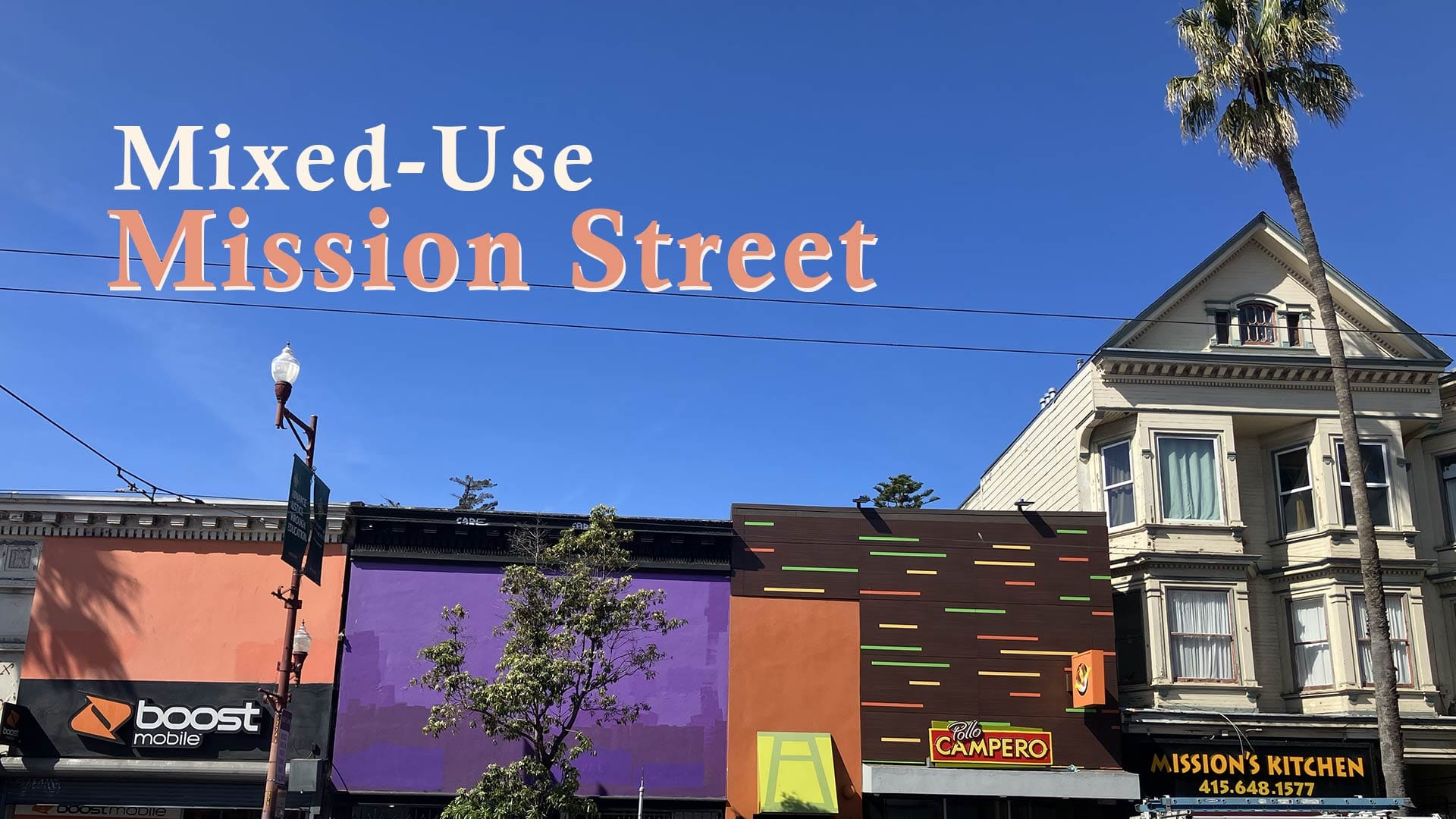
You have to be careful with your assumptions, especially in San Francisco. Yoga pants don’t necessary equal yoga classes. A get-up of cowboy hat, bandanna, and chaps signifies something different on Folsom Street than it does in Wyoming (except when it doesn’t).
And a line-up of junky storefronts on Mission Street doesn’t mean there wasn’t once something more interesting there.
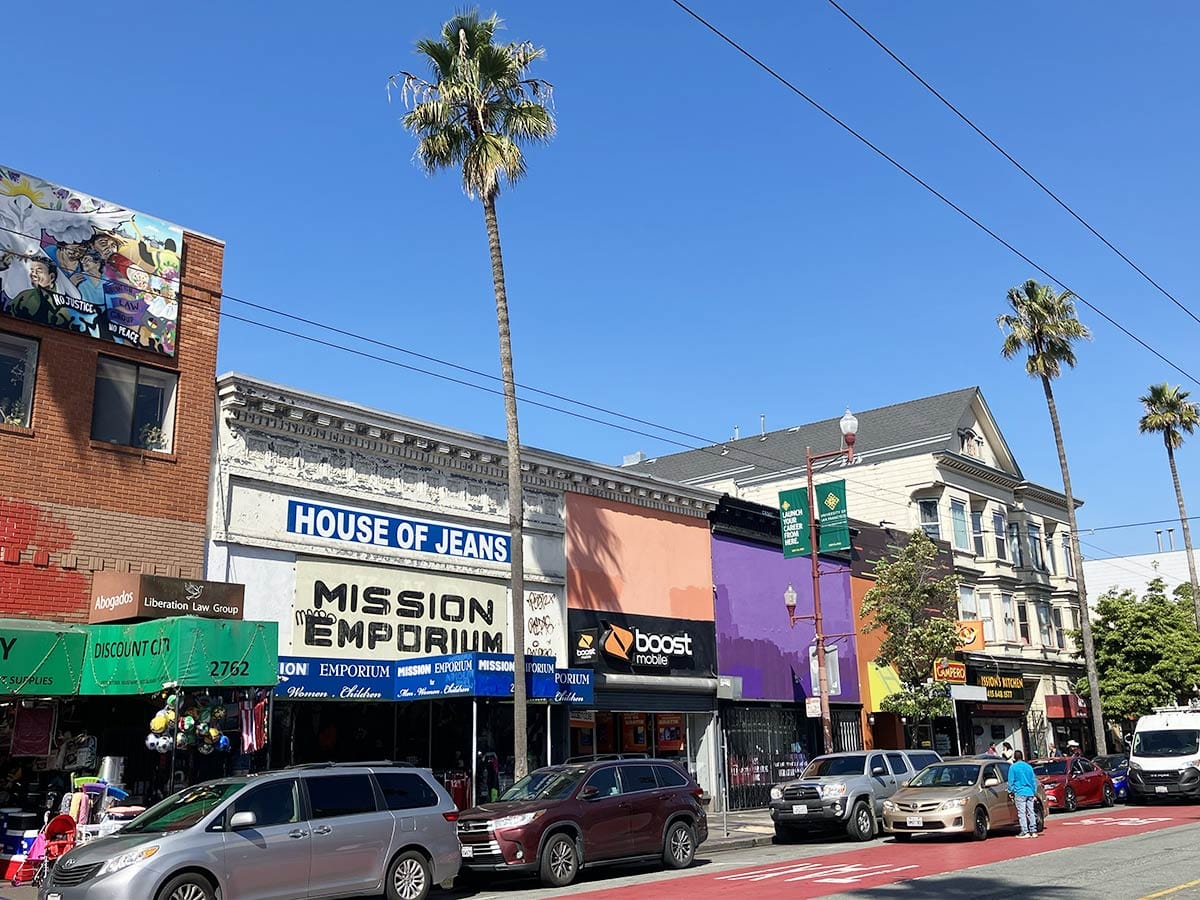
There’s not much to attract a tour bus between “Discount City #2” and Mission’s Kitchen on Mission Street between 23rd and 24th Streets. The businesses give the neighborhood cheap clothes, cheap cell phone plans, and counter-served chicken. The security gates are canvases for budding graffiti artists and humbler taggers.
The building on the northern edge of this line-up is the most interesting architecturally: some Classical Revival-style flats with blocky inset bay windows. The Palladian window in the gable retains some fancy-dancy mullions.

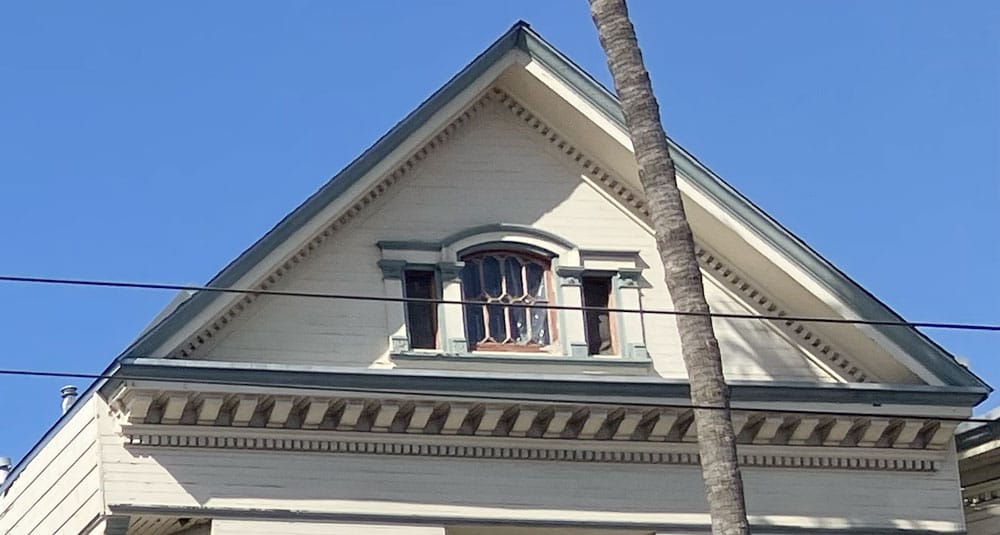
Second place belongs to the bracketed parapet beginning at House of Jeans and petering out before Pollo Campero. The whole stretch likely had this molded cornice before years of façade-chopping and “updating.”

Housing advocates certainly see this one-and-a-half-story stretch of stores as a prime place for throwing up some new units. It’s on a “transit-rich” commercial corridor just half a block from the 24th Street BART station.
Based on how beat up the shoe-box stores are, I wouldn’t fight them. There doesn’t seem to have been anything interesting here. Then I stumbled on this 1926 photo:
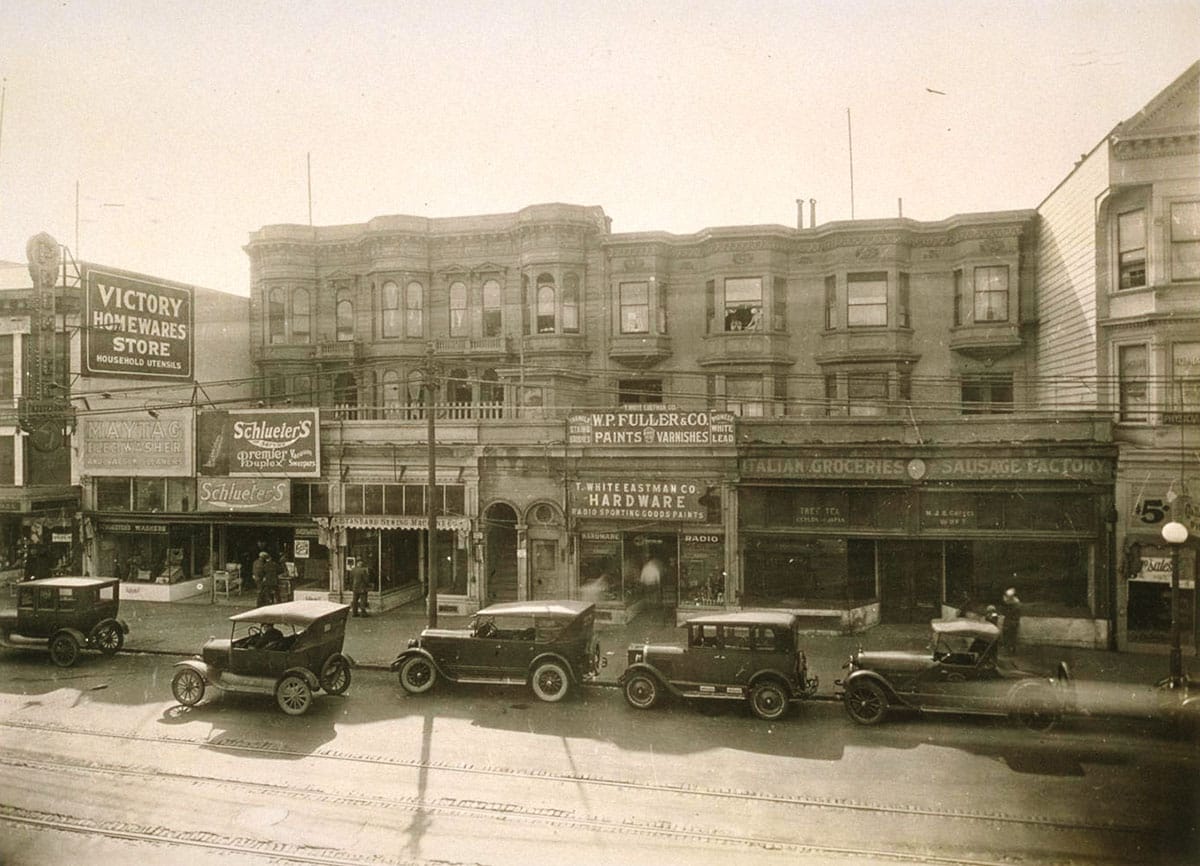
Wow, check out those apartments that used to be set back behind the street-side businesses: classy Italianate style all ginger-breaded up on the left and a later, slightly more restrained set of flats on the right.
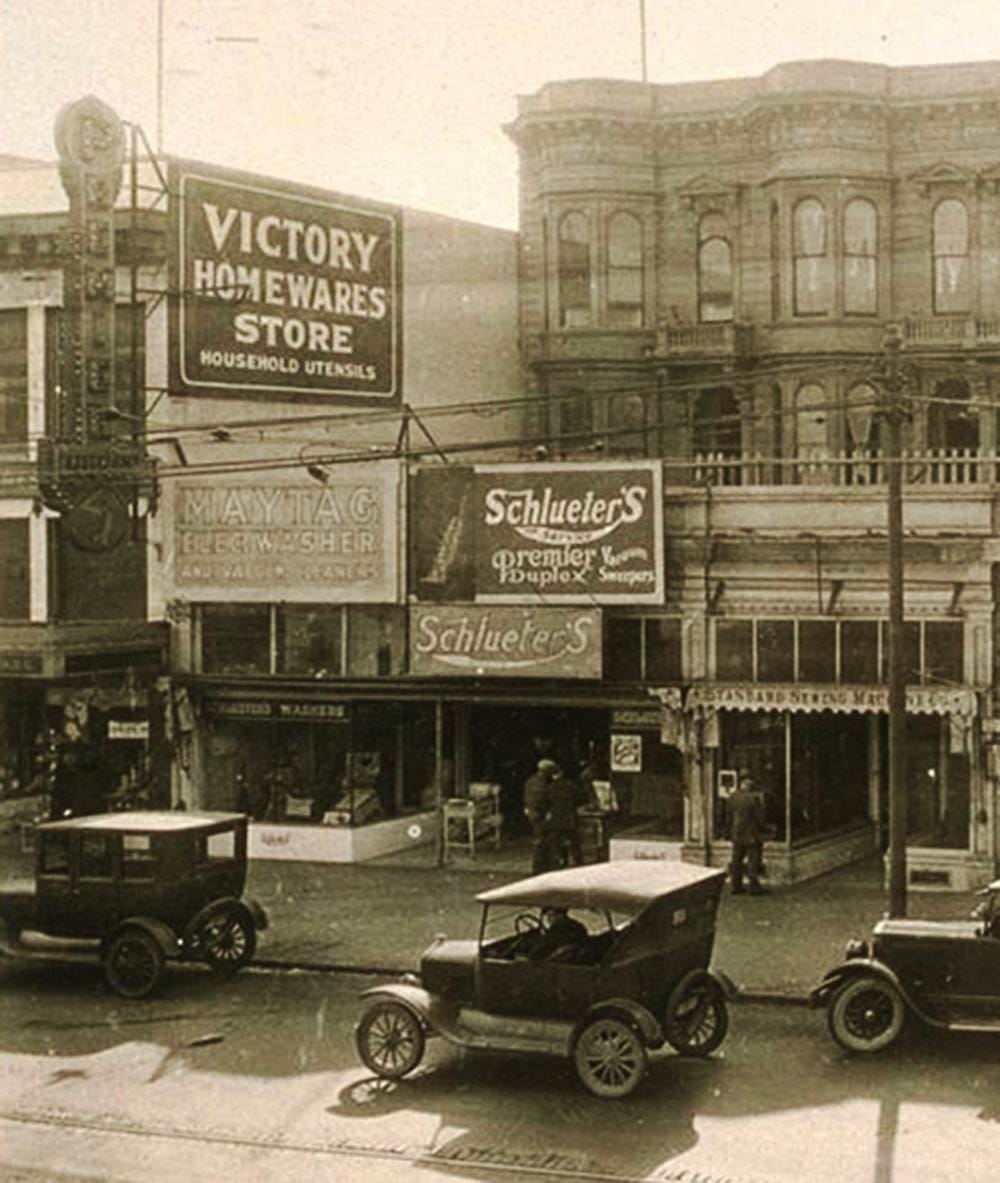
The arched doorways at the sidewalk open to a staircase on the left and an alley on the right to reach the back apartments.
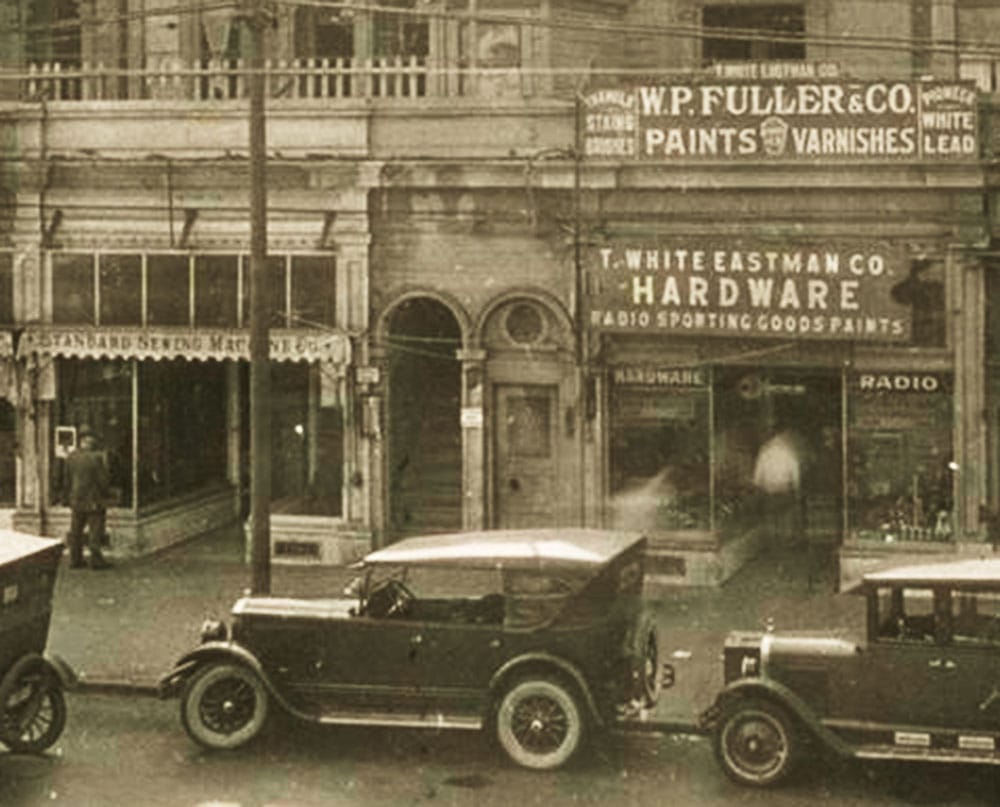
The Classical Revival flats on the right edge of the photo are the most recognizable part of this view, although we can’t see our Palladian window in the gable. Instead of Mission’s Kitchen, the ground floor has a Gallenkamp shoes ($5 seems a bit high for a 1926 sale) and a doctor’s office above. That street lamp globe is interesting too:
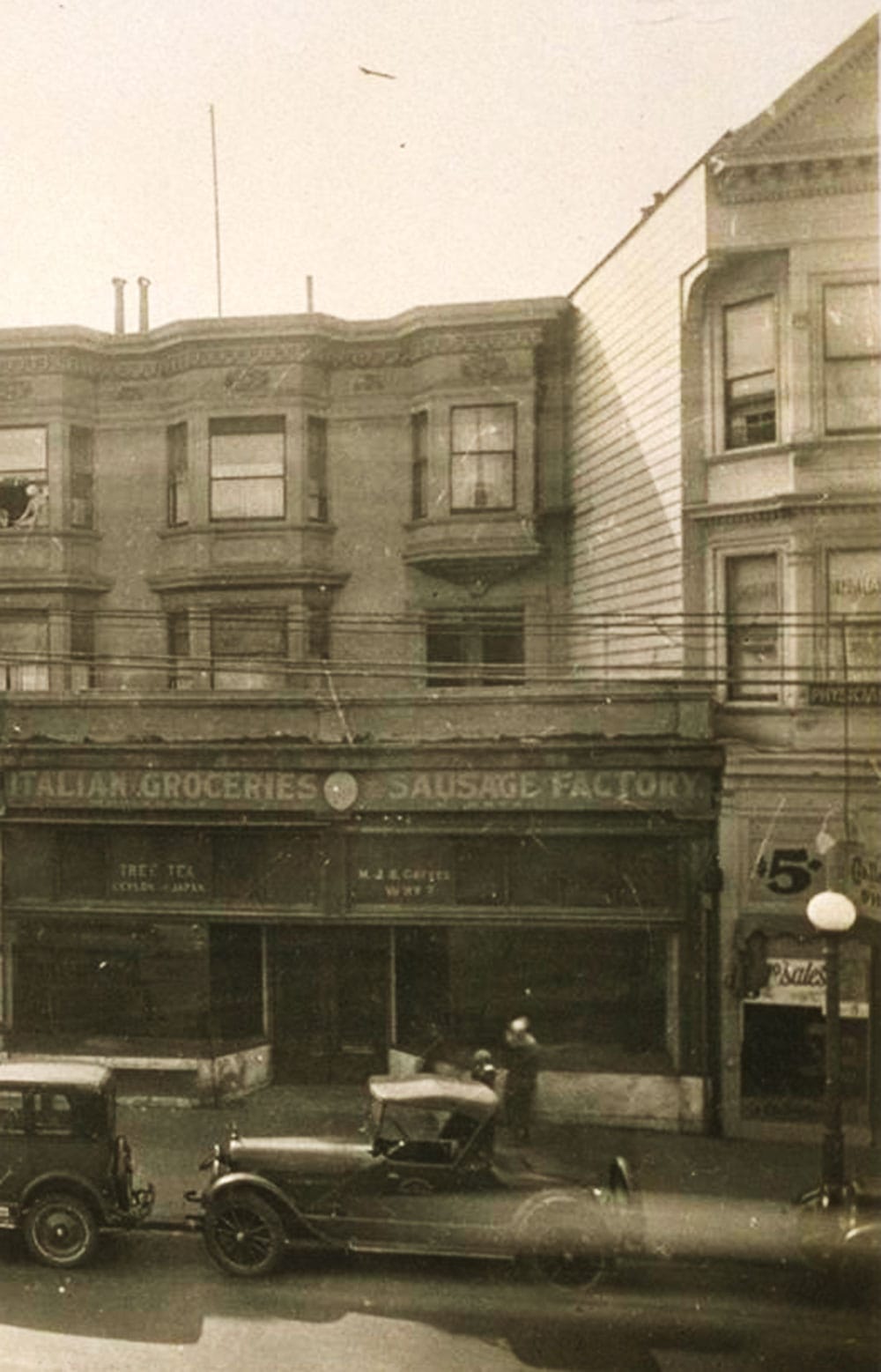
Shopping this section of Mission Street in 1926 equaled a modern person’s run to Walmart or Target: hardware and housewares, shoes and sausages, washing machines and vacuum cleaners. T. White Eastman’s hardware had competition across the street and on either side.
The 1926 photo reveals how the 1906 earthquake, and the massive three-day firestorm which followed it, didn’t just remake the disaster zone, but all of San Francisco. Three blocks south of where the fires were stopped at 20th Street in the Mission District, spottily developed land suddenly became prime real estate.
When the Italianate flats at 2750-2758 Mission Street were built in the 19th century, they had a set-back from the street. I like to think the residents had cute little front yards. Here they are depicted on the 1905 Sanborn fire insurance map:
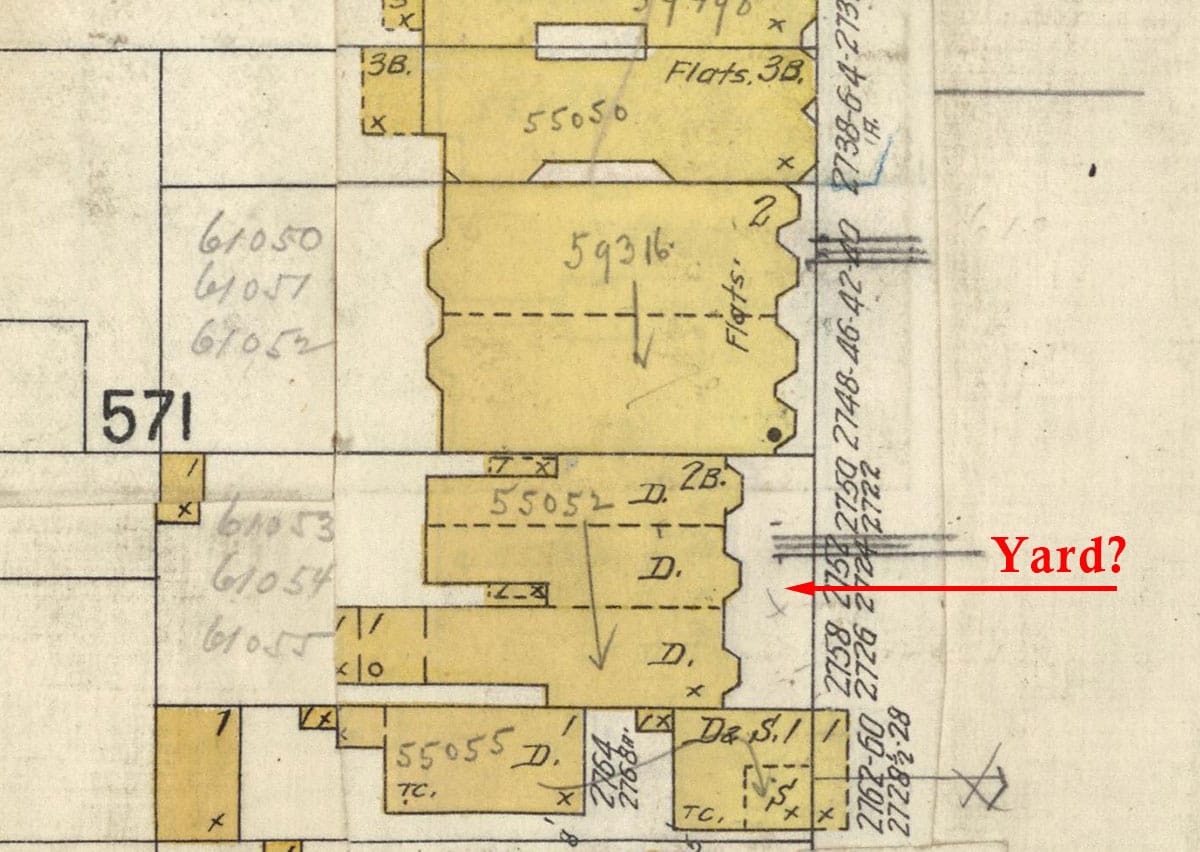
But after the quake, that front yard was prime real estate for business use, especially businesses aimed at a rebuilding San Francisco: hardware and paint and wallpaper stores.
The later-built neighboring flats on the north were shoved back on their lot to capture the new gold rush and create a full little line of one-story stores across both buildings:
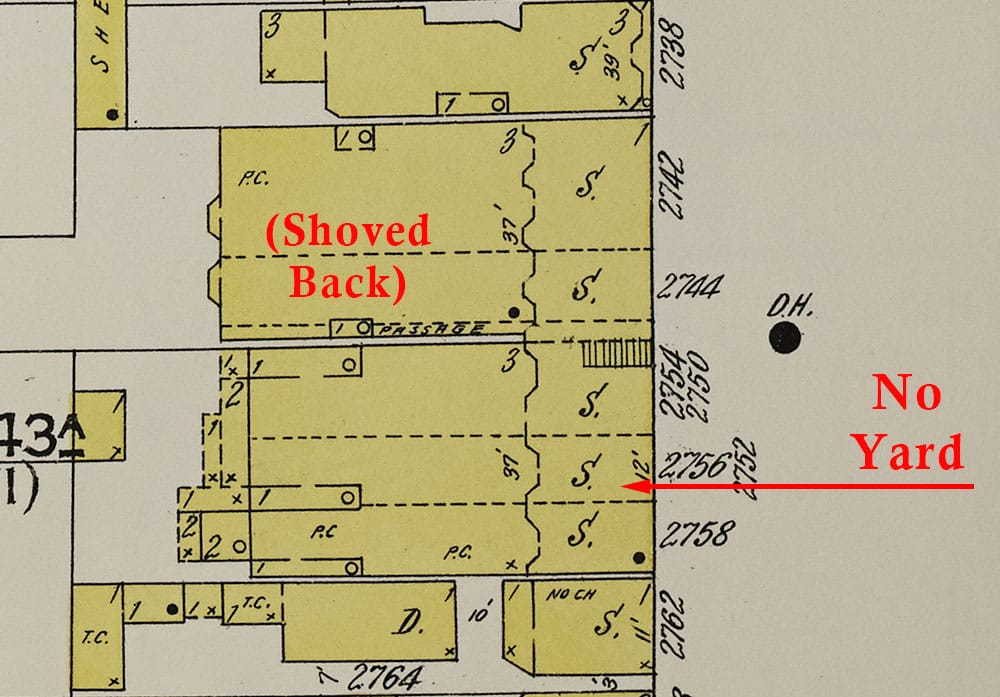
I believe our 1926 photo was taken because after 20 years of residential tenants and shop-keepers co-existing, the owner of the properties decided retail was the winner. Two decades after the quake, the Mission was built up, filled in, and the needs of the neighborhood changed.
In 1927, the entire stretch was demolished, including the rear flats. Modern storefronts running deep into the lots went up sporting the decorative cornice which survives above House of Jeans. Rather than hardware and big appliances, the new retailers mostly sold food and clothing.
In the 21st century we’ve circled back a bit. The Mission today is one of the few places in the city where you can still find small appliance stores and get a cheap washer or vacuum. Victory Homewares in 1926 was our Discount City #2 of today.
Whatever the next chapter, let’s not lose the street’s grandma with her blocky bays and arched eyebrow window in the gable.

Woody Beer and Coffee Fund
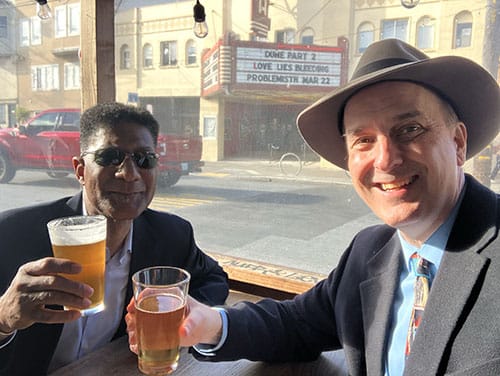
I am catching up on my coffee and beer dates. Thanks to Stacy M. (F.O.W.), Matthew S., and Marc N. (F.O.W.), the balance in the Woody Beverage Fund is keeping up with increased demand. Is it your turn? Let me know when you're free!

